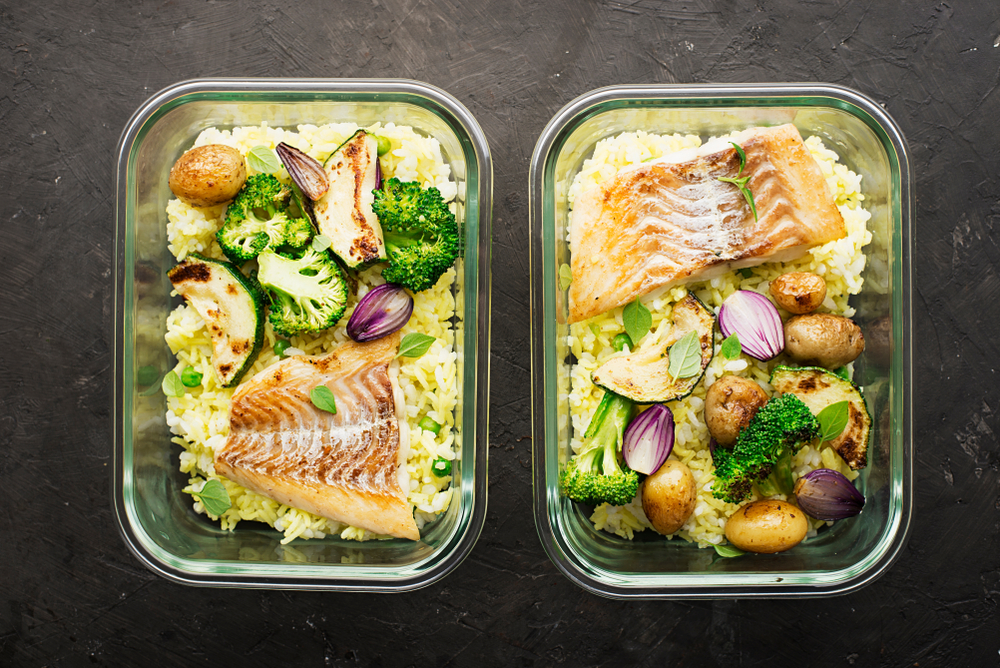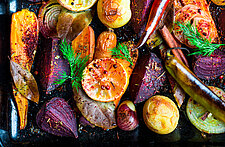With our favorite restaurants closed/or partially closed as we move into the re-opening phase, budget on the brain, and the threat of the “quaran-fifteen” always looming, consumers are cooking more at home than they have in years. These circumstances have caused families to think more about what they’re putting on the dinner table while cramming containers in the freezer after a serious round of batch cooking to ensure everyone stays fed and healthy. This behavior is also causing more trips to the supermarket and benefitting certain sections over others, leading to the tricky dilemma brands are having with both shelf overcrowding and slow restocking.
CLICK HERE to receive the latest industry updates to your inbox!
First and Foremost: Nutrition
In the face of a deadly pandemic, it’s no surprise that the public is focused on paying more attention to the nutritional value of their meals. Whereas we’ve seen a return to the center of the store in response to the virus, when it comes to a nutrition focus, the strongest sales continue to feature fresher items like produce, meats, and dairy. The perceived healthier options of fresh vs. frozen vegetables feeds into these sales and also keeps consumers who are cooking more at home coming back to supermarkets for more frequent, but smaller, shopping trips. As people cook more at home, they’re getting a better sense of what goes into their food and choosing healthier options for what will improve, maintain, and protect the health of their family against the risk of catching the virus.
According to Mintel, Google searches combining the terms “food,” “immune,” and “system” surged in the first two weeks of March. While there are plenty of results that help home cooks focused on nutrition with recipes for fresh broccoli, spinach, berries, etc., where packaged foods fall short is that immune-boosting claims are not often prominently featured on packaging outside of containers of vitamins and minerals. With the spotlight on immune system health, brands can step up and put themselves front and center with these flavors that people are now researching and looking out for while shopping.
Outside of the fresh category, home cooks are shopping for brands they trust, which comes as no surprise since consumers find comfort in brand recognition and established favorites. Now, people are less willing to try something new, and instead gravitate towards brands and safer flavors they know will be a hit while cooking for their families.
As seen in previous recessions and looking at the current state of unemployment, one major concern for consumers while shopping is finding the best value for their buck while meal planning. This has led to home cooks turning to large-batch cooking to stretch their dollar, thinking it better to freeze extras or live off leftovers for the week than worry about one-off meals. According to a report by the NPD Group on National Eatings trends, from 2018 to 2019, the average person ate 48 fresh or frozen in-home base chicken dishes, with the top being baked or roasted, fried, and as nuggets. The top buyers for chicken were low-income consumers and large families with those making a yearly household income of under $25k bought and ate the most chicken dishes at home with an average of 57.8 dishes per year, and households with five or more members ate 54.3 dishes per year. Chicken has always been king of the supermarket meats, and even more so now its reign is solid as budgets are tightened. Because of its high protein, flavor versatility, and value price, consumers are buying chicken in bulk and basing dinners around it at the center of the plate more often.
Join your peers on In-sight, CLICK HERE for our Weekly Newsletter!
Another popular large batch cooking staple is soup, something easy, nutritious, and filling to throw together that freezes well and is able to feed a family over multiple meals. Sales of packaged soups, though, are declining or stagnant at best and have been over the past three years. Flavors like butternut, mushroom, and seafood top the list of sales, while classics like tomato, minestrone, and potato have taken a downturn. Despite there being a rush to panic-buy canned items in the beginning of March, currently the decline follows the trend of people making their own soup from fresh ingredients at home. This is perceived as healthier, which also follows the trend of choosing more nutritious meals, so one way packaged soups can better resonate with these consumers now is to lean into healthy concepts like low sodium or high fiber, while promoting quick prep and convenience, as well.
Mood Boosters are a Home Must-Have
While most are cooking with a focus on value and nutrition, others are cooking for pleasure. A demand for calming, mood-boosting foods has been on the rise, and now, more than ever, people are looking for comfort through their food as they sit at home worrying over the world. They’re interested in catering to their well-being in holistic ways, including buying ingredients – like lemon, herbs, and CBD oils – to mix with relaxing green teas or soft drinks to better relax and improve their mental health. Consumers struggling to deal with stress are nothing new as we’ve seen the trend for “anti-energy drinks” and other relaxation products grow, but now is the time for brands to capitalize on promoting their stress-relieving ingredients and packaged goods to help the holistic crowd counteract their anxiety and restlessness.
One hobby to combat mental fatigue and boredom that’s exploded during the crisis has been bread making, especially sourdough. Everyone knows someone blowing up their Instagram timelines with pictures of freshly baked, crusty loaves of varying success, with lots of rosemary, garlic, and thyme; chia, seeds, and whole grains being the top flavors. And while this wholesome hobby hits the nation, stores have been reporting shortage of yeast, flour, sugar, and other essential baking needs since March. New home bakers are buying up the raw materials while packaged bread remains well stocked and ready for the less ambitious consumers looking to make a sandwich. With vegan and gluten-free demand for breads has risen, these baking materials are also in need of restocking now as the perceived value of making it themselves for people with allergies, especially, is raised during this time. Supermarket breads have not been selling out at the same rate as fresh and frozen sections, so bread baking is purely a way for consumers to find a relaxing outlet through an easy, physical, and rewarding activity in the kitchen.
Want to learn more about how food and beverage companies can succeed in this environment? Continue reading the latest on COVID-19 and the food and beverage industry:
• Sweet and Confectionery Trends on the Rise During COVID-19
• Foodservice Adaptations in the Age of COVID-19
• COVID-19's Impact on Alcoholic Beverage Categories
• Consumers 'Quarantine and Cook' With Social Media Inspiration
• COVID-19: Center of the Store Report
• 10 Opportunity Areas for CPG and Retailers in a COVID-19 World






